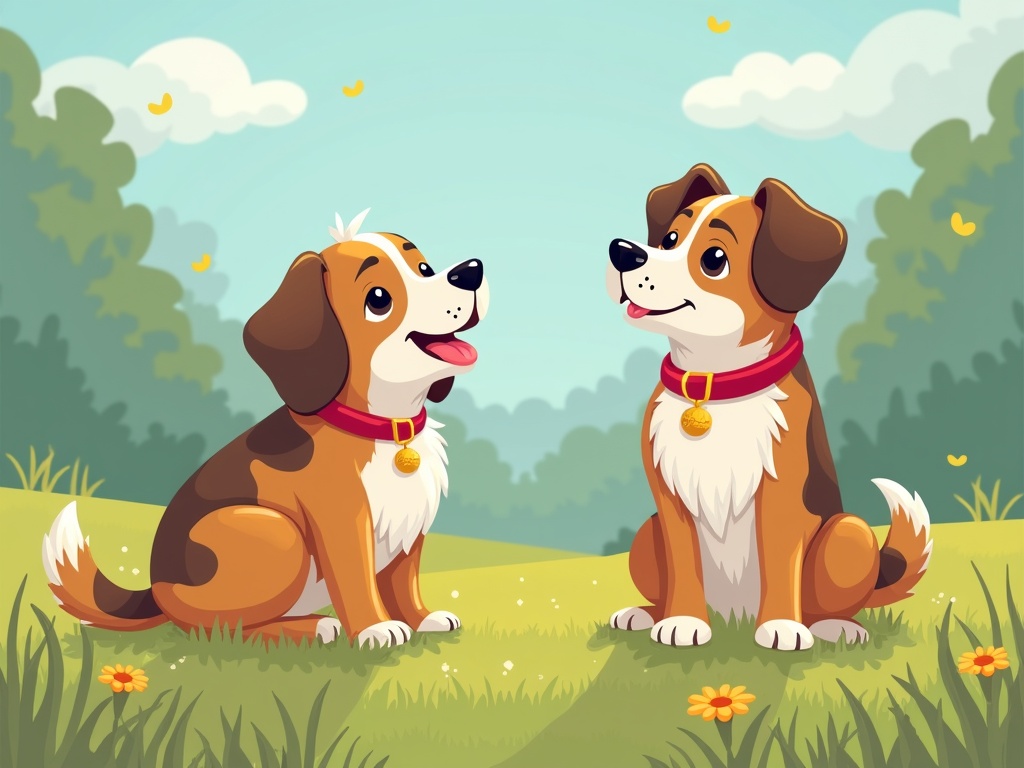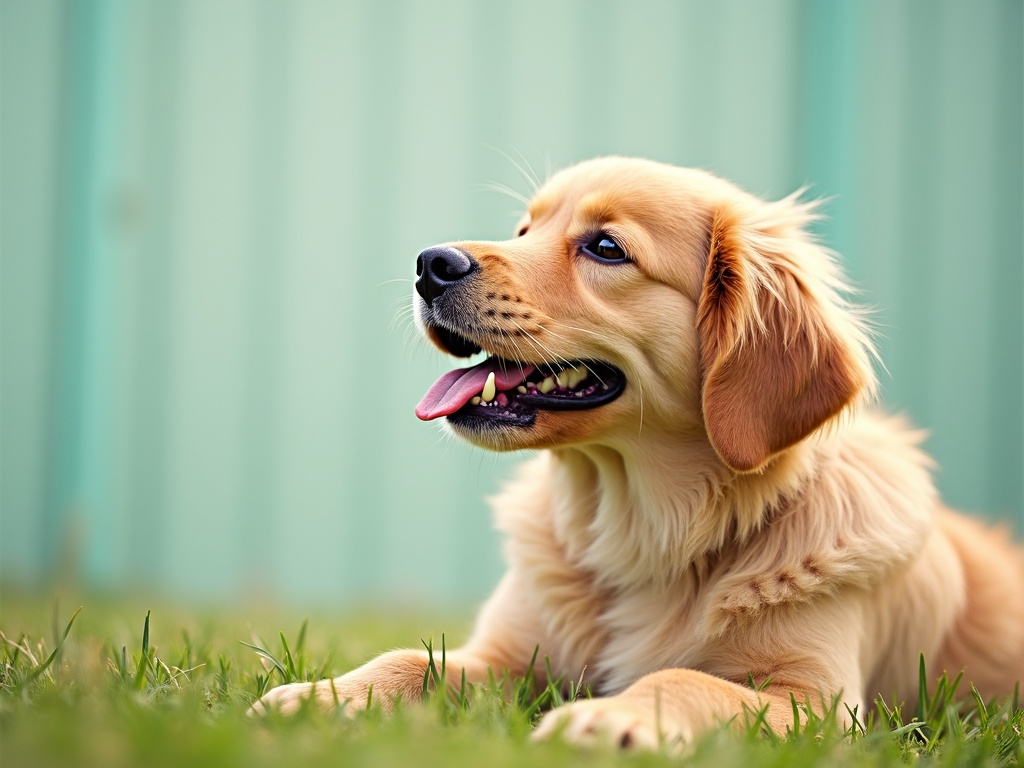Physical vs. Mental Exercise for Dogs: Which Matters More?
Ever watched a dog zoom around a park, chasing squirrels with unbridled enthusiasm, only to collapse in a panting heap moments later? Or perhaps you've seen a canine companion meticulously solve a puzzle toy, tail wagging furiously as they figure out the treat-releasing mechanism? We often think of exercise for dogs as purely physical, but the truth is, mental stimulation is just as crucial – and sometimes even more so. But how do you strike the right balance between the two? Let's dive into the fascinating world of canine enrichment and explore the importance of both physical and mental exercise for a happy, healthy, and well-behaved dog.
The Importance of Physical Exercise for Dogs
Physical exercise is what most people think of when considering a dog's needs. And rightfully so! It plays a vital role in maintaining their physical health and well-being. Think of it as the foundation upon which a dog's overall happiness is built. Here's why it matters:
- Weight Management: Just like humans, dogs need to burn calories to maintain a healthy weight. Regular physical activity helps prevent obesity, which can lead to a host of health problems, including joint issues, diabetes, and heart disease.
- Muscle Tone and Strength: Exercise helps build and maintain muscle mass, which is crucial for mobility, stability, and overall physical function. Strong muscles support joints and prevent injuries.
- Cardiovascular Health: Physical activity strengthens the heart and improves circulation, reducing the risk of heart disease and other cardiovascular problems.
- Energy Release: Dogs have pent-up energy that needs to be released. Without adequate physical exercise, this energy can manifest as destructive behaviors, excessive barking, and restlessness.
- Improved Sleep: A tired dog is a good dog, as the saying goes. Physical activity helps regulate sleep patterns, leading to more restful and restorative sleep.
Types of Physical Exercise for Dogs
The type and amount of physical exercise your dog needs will vary depending on their breed, age, size, and overall health. Here are some ideas:
- Walking and Running: A daily walk is a great way to provide basic exercise and mental stimulation (through exploring new sights and smells). For high-energy dogs, running, jogging, or even a brisk power walk can be more appropriate.
- Playing Fetch: A classic for a reason! Fetch is a great way to get your dog running and burning energy.
- Swimming: A low-impact exercise that's easy on the joints, swimming is excellent for dogs of all ages and abilities.
- Agility Training: A fun and challenging activity that combines physical exercise with mental stimulation. Agility courses involve navigating obstacles like jumps, tunnels, and weave poles.
- Dog Parks: A great way for your dog to socialize and play with other dogs, while also getting some exercise.
The Power of Mental Exercise for Dogs
While physical exercise addresses a dog's physical needs, mental exercise stimulates their minds and provides cognitive enrichment. Just like humans, dogs need mental stimulation to stay sharp, engaged, and content. Think of it as the icing on the cake when it comes to your dog’s well-being. A tired mind is just as valuable as a tired body!
- Reduces Boredom and Anxiety: Mental stimulation helps prevent boredom, which can lead to destructive behaviors, excessive barking, and anxiety.
- Improves Problem-Solving Skills: Puzzle toys and training exercises challenge a dog's cognitive abilities, helping them develop problem-solving skills.
- Strengthens the Bond with Owners: Engaging in mental activities together strengthens the bond between you and your dog.
- Provides an Outlet for Natural Instincts: Many mental exercises tap into a dog's natural instincts, such as hunting, foraging, and herding.
- Enhances Trainability: A mentally stimulated dog is more focused and attentive, making them easier to train.
Types of Mental Exercise for Dogs
The beauty of mental exercise is that it can be incorporated into your dog's daily routine in many ways. Here are some ideas:
- Puzzle Toys: These toys require dogs to solve a problem to access a treat. They come in various levels of difficulty, from simple treat-dispensing balls to complex multi-step puzzles.
- Training Games: Teaching your dog new tricks or commands is a great way to provide mental stimulation. Focus on positive reinforcement methods.
- Scent Work: Dogs have an incredible sense of smell. Scent work involves hiding treats or objects and having your dog find them using their nose. This can be as simple as hiding treats around the house or as complex as participating in organized scent work trials.
- Interactive Games: Games like hide-and-seek, tug-of-war (with rules!), and even simple games like find the toy can provide mental stimulation and strengthen your bond.
- Food Enrichment: Instead of feeding your dog from a bowl, try using a slow feeder bowl, a snuffle mat, or scattering their food in the yard for them to forage for. These methods force them to work for their food, providing mental stimulation in the process.
Striking the Right Balance: Physical vs. Mental Exercise
So, which is more important: physical or mental exercise? The answer is that both are essential, and the ideal balance will depend on your individual dog's needs. However, it’s been said that 15 minutes of mental exercise is equal to a 30 minute walk.
Here's a general guideline:
- High-Energy Dogs: Typically, these dogs need a good amount of both physical and mental exercise. Think herding breeds, sporting breeds, and working breeds. A combination of daily walks/runs, playtime, and mental enrichment activities is ideal.
- Low-Energy Dogs: While they may not need as much physical exercise, low-energy dogs still benefit from regular mental stimulation. Puzzle toys, short training sessions, and gentle walks can keep their minds engaged.
- Senior Dogs: As dogs age, their physical abilities may decline, but their minds still need stimulation. Focus on low-impact physical activities like short walks and gentle stretching, coupled with plenty of mental enrichment.
- Dogs with Disabilities: Adapt physical and mental exercise to suit their abilities. Hydrotherapy can be a great option for dogs with mobility issues, while puzzle toys and scent work can provide mental stimulation without requiring much physical exertion.
Signs Your Dog Needs More Exercise (Physical or Mental)
Pay attention to your dog's behavior, as it can be a good indicator of whether they are getting enough exercise. Some common signs of under-stimulation include:
- Destructive Behavior: Chewing, digging, scratching
- Excessive Barking or Whining
- Restlessness or Hyperactivity
- Attention-Seeking Behaviors: Nipping, jumping, pawing
- Changes in Appetite or Sleep Patterns
- Lethargy or Apathy
If you notice these signs, try increasing your dog's physical or mental exercise, or both!
Practical Tips for Incorporating Both Types of Exercise
Integrating physical and mental exercise into your dog's routine doesn't have to be complicated. Here are some practical tips:
- Combine Physical and Mental Activities: Turn your walks into scavenger hunts by hiding treats along the way. Use a flirt pole to engage their prey drive while providing physical exercise.
- Use Mealtime as an Opportunity for Enrichment: Feed your dog using a puzzle toy or snuffle mat instead of a bowl.
- Rotate Toys Regularly: Keep things interesting by rotating your dog's toys to prevent boredom. Bring out a new toy every few days to spark their interest.
- Take Advantage of Training Opportunities: Incorporate training exercises into your daily walks. Practice commands like sit, stay, and come in different locations.
- Listen to Your Dog: Pay attention to your dog's cues and adjust their exercise routine accordingly. Some days they may need more physical activity, while others they may benefit more from mental stimulation.
The Long-Term Benefits of a Balanced Approach
Investing in both physical and mental exercise for your dog yields significant long-term benefits. A well-exercised dog is a happier, healthier, and more well-behaved companion. Here's what you can expect:
- Improved Overall Health: Reduced risk of obesity, heart disease, joint problems, and other health issues.
- Enhanced Cognitive Function: Sharper minds, improved problem-solving skills, and reduced risk of cognitive decline as they age.
- Stronger Bond: A deeper connection with your dog, built on shared experiences and mutual understanding.
- Reduced Behavioral Problems: Less destructive behavior, excessive barking, and anxiety.
- A Happier Dog: A dog who is physically and mentally stimulated is a dog who is living their best life!
Ultimately, understanding the crucial roles of both physical and mental exercise allows you to tailor a complete enrichment strategy for your canine friend. Providing the right balance ensures a well-rounded, content, and thriving dog for years to come. So, get out there, explore new games, introduce novel puzzle toys, and enjoy the journey of enriching your dog's life, both physically and mentally.


